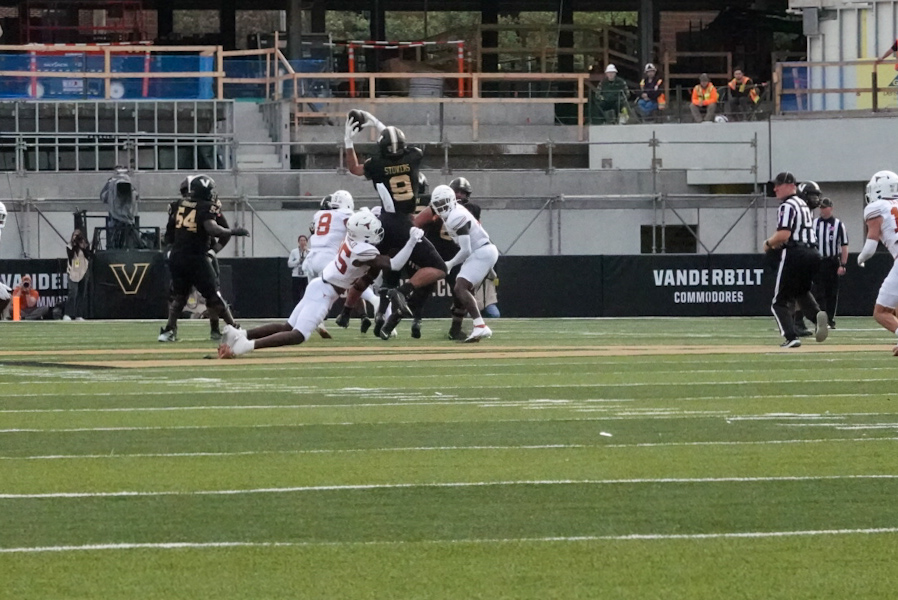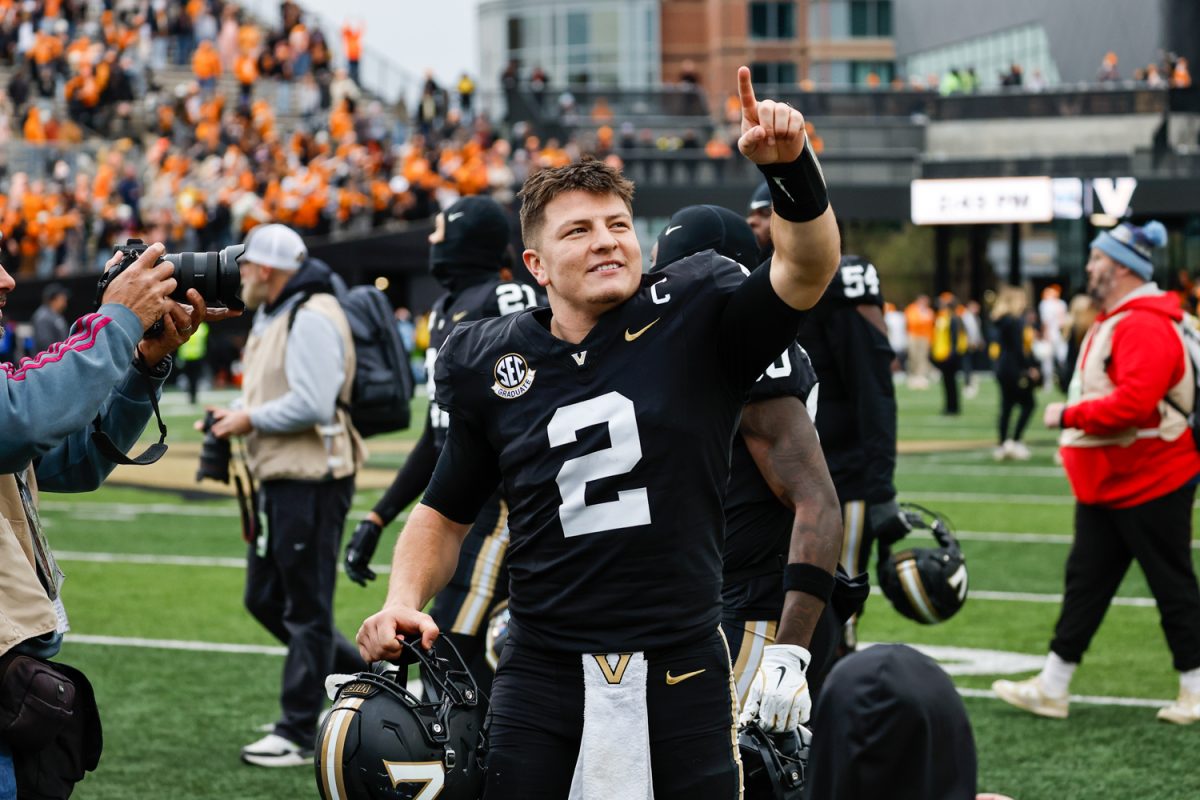Vanderbilt Football defeated Auburn 17-7 on Saturday in a game featuring abysmal offensive performances from both teams. While the Commodores were outgained by 100 yards and quarterback Diego Pavia completed just 41% of his passes, their 17 points proved enough to get by the Tigers. A few key metrics demonstrate how Vanderbilt pulled off the victory thanks to its control of field position despite the offense’s struggles.
Limiting negative plays
Vanderbilt controlled the field position battle through its defensive line, sacking Payton Thorne three times and stopping Jarquez Hunter from getting to the second level. These negative plays set Auburn behind the chains, with an average of 6.9 yards to go on third downs, of which the Tigers converted just 15.4%. These plays made all the difference in a game where both offenses struggled to get into a groove. Pavia and his offensive line kept the Commodores’ offense running smoothly on the other side of the ball, limiting tackles for loss to just three while not allowing any sacks. These plays kept the Commodores ahead of the sticks and put themselves in a better position to move the ball, as they ran 34% of their plays in opposing territory, compared to Auburn's 19%.
Penalties also played a significant factor in the game: Vanderbilt kept the laundry off the field, committing just three penalties that cost the team 21 yards. On the other hand, the Tigers were called for six penalties for 47 yards, three of which gave Tim Beck's offense automatic first downs. Two of the Tigers’ penalties occurred in the fourth quarter during pivotal moments, providing life for the Commodores, who gained just 12 first downs all afternoon. Vanderbilt remained in control of the contest by minimizing negative plays and making the most of its opportunities.
Ground and pound
Auburn running back Jarquez Hunter rushed for nearly 300 yards and 2 touchdowns last week in Auburn’s matchup against Kentucky. His game-changing ability, paired with Vanderbilt’s consistent commitment to the run this season, meant that the ground game was going to play a pivotal role in the contest. The Commodores utilized the run game on 62% of their offensive plays, compared to 50% for the Tigers. The stats indicate that Vanderbilt was highly ineffective on the ground at Auburn — averaging just 2.2 yards per carry while gaining zero yards 34% of the time. Both teams' rushing success rate was meager in this contest, but the Commodores made it count when it mattered. Vanderbilt converted 75% of its power rushes (runs with two yards or less to go to gain a first down), while the Tigers completed just 40%. The Black and Gold were able to slow down the pace of play through the run game, finishing the game leading the time of possession battle by four minutes (31:57-28:03).
(Extra) special teams
Special teams can make all the difference in a low-scoring affair, and this proved true on Saturday. Vanderbilt punter Jesse Mirco averaged 52.9 yards on 8 punts Saturday — 5.8 yards longer than his season average, which ranks ninth in the country. The Tigers struggled in the kicking game, too, missing two critical field goals in the second half that would have completely changed the game script. The misses set up Vanderbilt with good field position to start drives late in the game.
Martel Hight’s 39-yard punt return late in the game set the Black and Gold up with prime field position and ultimately guided them to a lead that they would not relinquish. This advantage allowed Vanderbilt to flip the field effectively, with Auburn starting its drives, on average, back at the 23-yard line, compared to the 32 for the Commodores.
Auburn's lack of reliability on special teams — coupled with Vanderbilt's success — gave the Commodores an important edge all game. With both offenses sputtering, the ‘Dores needed everything they could get out of their defense and special teams, and they delivered.
The Commodores will look to pull off yet another upset as they take on South Carolina at home this Saturday, Nov. 9, at 3:15 p.m. CST.








